The Constellation Lyra, the Harp
Click on image for full size
Lyra
Lyra, the Lyre, is a type of small harp held in the player's lap. The
brightest star in Lyra, Vega, is
placed in the handle of the harp. A small parallelogram of four faint
stars just to the southeast of Vega outline the harp itself. Lyra is
one of three constellations whose brightest stars form the Summer
Triangle.
Vega is a very bright star (the fifth brightest in the whole sky) and
is very close. Lyra is also home to one of the brightest, loveliest planetary nebulae, the Ring Nebula. It can be viewed with binoculars, although it's distinctive smoke-ring shape cannot.
According to Greek mythology, the lyre was invented by Hermes as a
child when he strung a tortoise shell. He traded the lyre to Apollo,
who then gave it to his son, Orpheus, a great poet and musician. Some
Asian traditions see the bright star Vega as the Weaving-Princess
star who marries a shepherd, the star Altair.
The Lyrid meteor shower happens in April each year. The meteors in the Lyrid meteor shower seem to shoot outward from the constellation Lyra.
You might also be interested in:

What types of instructional experiences help K-8 students learn science with understanding? What do science educators teachers, teacher leaders, science specialists, professional development staff, curriculum designers, school administrators need to know to create and support such experiences?
...more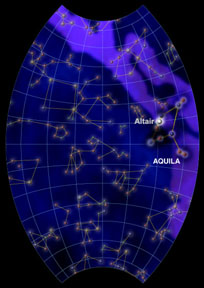
What's in a Name: Arabic for "Aquila". Claim to Fame: Brightest star in Aquila. One of the corners of the Summer Triangle. Type of Star: White Subgiant How Far Away: 17 light years away How Bright: Almost
...more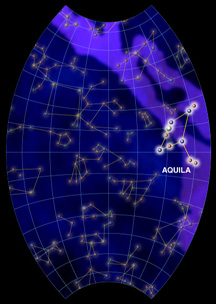
Aquila, the celestial eagle, is one of the three constellations which have bright stars forming the Summer Triangle. A nearly perfectly straight line of three stars symbolizes part of the wings. The center
...more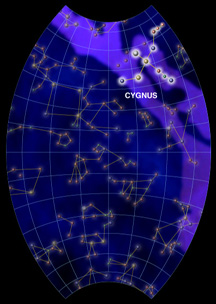
Cygnus, the Swan, is also known as the Northern Cross because of its shape. The tail of the swan is marked by the bright star Deneb, Arabic for "tail". Three fainter stars cross the line between Deneb
...more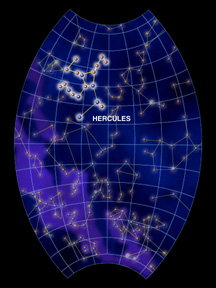
Hercules, the great Greek warrior, can be seen kneeling in the sky for northern latitudes throughout the Spring months. Hercules first becomes visible in the east in April, and works his way high across
...more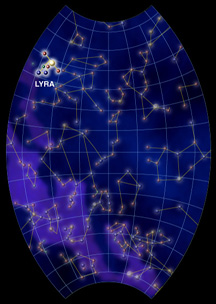
Lyra, the Lyre, is a type of small harp held in the player's lap. The brightest star in Lyra, Vega, is placed in the handle of the harp. A small parallelogram of four faint stars just to the southeast
...more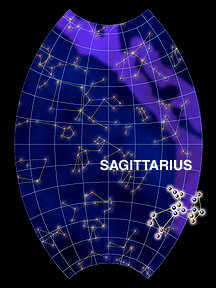
Sagittarius is a centaur, with the torso of a man atop the body of a horse. Unlike the wise and peaceful centaur Chiron (Centaurus), Sagittarius is aiming his giant bow at his neighbor, Scorpius. While
...more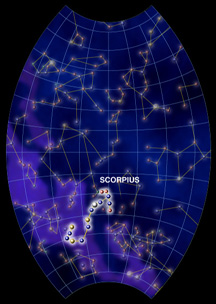
More than any other constellation, Scorpius resembles its given name. If you live in the northern hemisphere of the Earth, Scorpius crawls across the southern sky, close to the horizon. But if you live
...more














